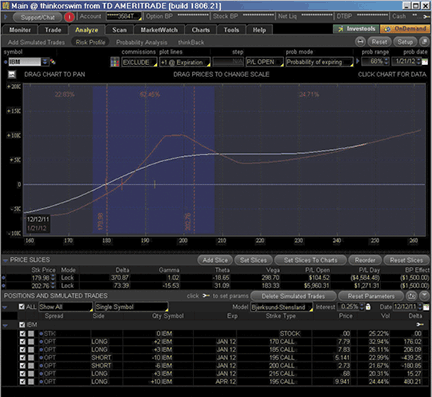OPTIONS
Consistency Above All
The Calendar King
by John A. Sarkett
In options, consistency wins. Here’s how one option trader fared using this concept.
A calendar spread is among the simplest of option strategies, yet among the most durable and profitable. A simplified explanation: the strategist sells a near-month contract and buys a far month against it. The near month loses value faster than the back month, and that is how a profit is generated.
As in most things, there is more to it than that, and that is why two years into the practice of trading calendar spreads, trader Himanshu Raval sought out an option mentor to learn the greeks. He found Dan Sheridan on a CBOE website video. Sheridan traded as an IBM market maker in his 24-year CBOE career, including thousands of calendars, so he knew whereof he taught.
Raval signed on as a student, and as a result, he doubled his returns from the 5% to 10% per month range to a 15% to 20% per month level, becoming something of a star in the option mentoring community.
He holds forth on the merits of a consistent approach. A meticulous recordkeeper, in the past year he has earned 18% per month on his IBM calendars with an average of 25 to 27 days in a trade.
Why IBM?
Historically, IBM has moved less than 8% per month on average. The less the underlying moves, the better for the calendar spreader. Raval also tried other tickers — JNJ, PG, and DIA — but like many professional traders before him, he settled on Big Blue, IBM. Here’s how he does it.

FIGURE 1: AN ELASTIC APPROACH. RISK CURVE OF IBM TRIPLE CALENDAR (175, 185, 190) AT THE END OF A LONG, PROFITABLE RIDE. Raval varies number of calendars from one to three, and time of calendar spreads between four and 12 months, depending on his readings of volatility and market direction, but one thing remains constant: he is in the market each month.
Excerpted from an article originally published in the October 2012 issue of Technical Analysis of Stocks & Commodities magazine. All rights reserved. © Copyright 2012, Technical Analysis, Inc.
Return to Contents
